
Авиация появилась давно, когда братья Райт впервые поднялись в небо. Эти самолеты установили рекорды, произвели революцию в авиаперевозках и сыграли решающую роль в военных операциях.
В 2024 году гонка за скоростью продолжается, самолеты преодолевают барьеры и устанавливают новые рекорды от знаковых военных самолетов до новаторских экспериментальных самолетов.
 Фото: Неизвестный
Фото: НеизвестныйВ этом блоге, Вы узнаете о том, Топ-15 самых быстрых самолетов в мире по своим возможностям и особенности, Это самый быстрый самолет в мире. Топ-10 самых быстрых истребителей в мире. Итак, давайте начнем.
Таблица содержимого:
- Список 15 самых быстрых самолетов в мире 2024
- Самый быстрый самолет в мире: NASA X-43
- NASA X-15
- Lockheed SR-71 Blackbird
- Микоян МиГ-25 Foxbat
- Lockheed YF-12
- Конвейр XB-70 Valkyrie
- Микоян МиГ-31 Фоксхаунд
- Макдоннелл Дуглас F-15 Eagle
- Сухой Су-27
- МиГ-23 Флоггер
- Grumman F-14 Tomcat
- МиГ-29 Fulcrum
- ИАИ Кфир
- Lockheed Martin F-22 Raptor
- Мак Доннелл Дуглас Ф-4 Фантом II
- Топ-10 самых быстрых истребителей в мире
- Топ-15 самых быстрых самолетов в мире 2024 - FAQ
Список 15 самых быстрых самолетов в мире 2024
| С.Н. | Самолет | Максимальная скорость (маш) | Максимальная скорость (Мф) | Страна | Год Представленный |
| 1 1 | NASA X-43 | 9.6.6 | 7 366 | США | 2004 год |
| 2 2 | NASA X-15 | 6.72 | 4 520 | США | 1959 |
| 3 | Локк SR-71 Черная птица | 3.35 | 2500 | США | 1966 |
| 4.4 | Микоян МиГ-25 Foxbat | 3.2.2 | 2190 | СССР | 1964 год |
| 5 | Lockheed YF-12 | 3.2.2 | 2 275 | США | 1966 |
| 6.6 | Конвейр XB-70 Валькирия | 3.0 | 2000 | США | 1964 год |
| 7. | Микоян МиГ 31 Фоксхаунд | 2.83 | 1900 | СССР | 1975 |
| 8 | Макдоннел Обсуждение F-15 Eagle | 2,5 | 1650 | США | 1976 |
| 9 9 | Сухой Су-27 | 2.35 | 1600 | СССР | 1985 |
| 1010 | МиГ-23 Флоггер | 2.35 | 1553 | СССР | 1970 |
| 11. | Grumman F-14 Tomcat | 2.34 | 1544 | США | 1974 |
| 12. | Микоян МиГ -29 Фулкрум | 2.3 | 1520 | СССР | 1984 |
| 13 | ИАИ Кфир | 2.3 | 1520 | Израиль | 1976 |
| 14 | Lockheed Martin F-22 Raptor | 2.25 | 1500 | США | 2005 год |
| 15 | Мак Доннелл Дуглас Ф-4 Фантом II | 2.23 | 1,470 | США | 1960 |
Самый быстрый самолет в мире: NASA X-43
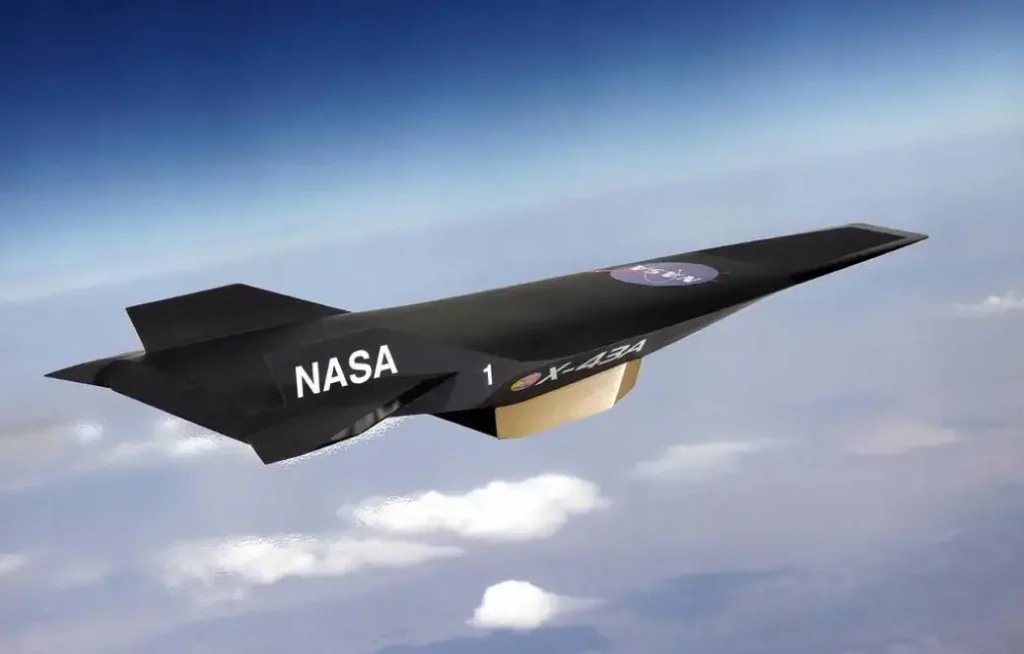 NASA X-43 (самый быстрый самолет в мире 2024)
NASA X-43 (самый быстрый самолет в мире 2024)Название самого быстрого самолета в мире принадлежит NASA X-43Экспериментальный реактивный автомобиль. Этот беспилотный летательный аппарат достиг рекордной скорости 9.6 Махапереводить приблизительно 7 366 миль в час (11 854 км / ч).
X-43 был беспилотным летательным аппаратом (БПЛА), предназначенным для исследований и испытаний. Революционный двигатель Scramjet Engine был ядром X-43, позволяя ему достигать и поддерживать гиперзвуковые скорости.
Основные характеристики NASA X-43:
- Тип: Экспериментальный реактивный автомобиль
- Скорость: Мах 9,6 (7 366 миль в час / 11 854 км / ч)
- Роль: Разработанный для тестирования и проверки технологии scramjet, тип реактивного двигателя, который работает на гиперзвуковых скоростях.
- Первый полет: Первый полет X-43 состоялся 27 марта 2004 года в рамках программы НАСА Hyper-X.
- Двигатель: Транспортное средство оснащено двигателем Scramjet (суперзвуковой двигатель внутреннего сгорания), что позволяет ему достигать замечательных скоростей.
- Высота: X-43 достиг высоты около 110 000 футов (33,5 км).
- Продолжительность миссииКаждый полет X-43 был относительно коротким, обычно он длился всего около 10 секунд.
Примечательные достижения:
- NASA X-43 является частью программы Hyper-X, целью которой является разработка и демонстрация передовых технологий дыхательных двигателей.
- Он установил мировой рекорд скорости для самолета, работающего на воздушно-дыхательном двигателе.
 Фото: NASA X-15, Драйденская галерея истории - NARA & DVIDS Public Domain Archive Public Domain Search
Фото: NASA X-15, Драйденская галерея истории - NARA & DVIDS Public Domain Archive Public Domain Search2. NASA X-15
X-15 был революционным исследовательским самолетом, совместно разработанным НАСА и ВВС США. Разработанный, чтобы раздвинуть границы атмосферного полета, это был самолет с ракетным двигателем, способный достигать гиперзвуковых скоростей.
Экспериментальный самолет, который достиг самой высокой скорости когда-либо крылатым самолетом. NASA X-15 был ракетным самолетом, который достиг скорости 6,72 Маха (4520 миль в час). Пилоты Х-15 заработали крылья космонавта для полетов выше 50 миль (80 км).
К ключевым особенностям относятся:
- Роль: Исследовательские самолеты
- Макс Спид: Маха 6,72 (приблизительно 4520 миль в час)
- Первый рейс: 19 июля 1959 года
- Примечательные особенностиРакетный двигатель, гиперзвуковые возможности, значительный вклад в аэрокосмические исследования.
- Рекорд высоты: 354 200 футов (107,8 км)
- ЭлектростанцияРакетный двигатель XLR99
- Операционный период1959—1968
- значениеПионерский высокоскоростной, высотный полет, предоставляющий ценные данные для будущего проектирования космических аппаратов.
 Фото: Джонатан Катрер из Сан-Анджело, штат Техас, США - Lockheed SR-71 Blackbird, CC BY 2.0, https://commons.wikimedia.org/w/index.php?curid=84513457
Фото: Джонатан Катрер из Сан-Анджело, штат Техас, США - Lockheed SR-71 Blackbird, CC BY 2.0, https://commons.wikimedia.org/w/index.php?curid=845134573. Lockheed SR-71 Blackbird
SR-71 Blackbird был дальним, высотным стратегическим разведывательным самолетом, управляемым ВВС США. Известный своей скоростью и способностью уклоняться от обнаружения, он был краеугольным камнем сбора разведданных времен холодной войны.
SR-71 использовал два двигателя Pratt & Whitney J58-P4, что позволило ему обогнать угрозы. Дальность полета составила 2900 миль (4667 км) без дозаправки. Предназначенный для наблюдения, он был жизненно важен во время холодной войны. Он известен своими скоростными и высотными возможностями, он мог работать на высоте 85 000 футов (25 908 м).
К ключевым особенностям относятся:
- Роль: Разведывательный самолет
- Макс Спид: Маха 3.2 (приблизительно 2193 миль в час)
- Первый рейс: 22 декабря 1964 года
- Примечательные особенности: Конструкция титана, высотные возможности, отличительная черная краска для поглощения радаром
- Оперативный потолок: 85 000 футов (25 908 м)
- диапазон2900 миль (4667 км) без дозаправки
- Электростанциядвигатели Pratt & Whitney J58-P4
- Операционный период1966-1998 годы
- значениеИзвестен своими непревзойденными скоростными и высотными возможностями, что сделало его бесценным для разведывательных миссий во время холодной войны.
 Фото: Алекс Бельтюков - Команда RuSpotters - Галерея http://www.airliners.net/photo/Russia - Air/Mikoyan-Gurevich-MiG-25RB/2195954/LPhoto http://cdn-www.airliners.net/aviation-photos/photos/4/5/9/2195954.jpg, CC BY-SA 3.0, https://commons.wikimedia.org/w/index.php?curid=27355629
Фото: Алекс Бельтюков - Команда RuSpotters - Галерея http://www.airliners.net/photo/Russia - Air/Mikoyan-Gurevich-MiG-25RB/2195954/LPhoto http://cdn-www.airliners.net/aviation-photos/photos/4/5/9/2195954.jpg, CC BY-SA 3.0, https://commons.wikimedia.org/w/index.php?curid=273556294. Микоян МиГ-25 Foxbat
МиГ-25 был сверхзвуковым самолетом-перехватчиком, разработанным Советским Союзом. Предназначенный для высотного перехвата, он был способен достигать замечательных скоростей. МиГ-25 Foxbat является перехватчиком с максимальной скоростью 3,2 Маха (2,190 миль в час / 3529 км / ч).
Он был впервые запущен в 1964 году и остается в ограниченном количестве. Работает на высотах до 80 000 футов (24 384 м). Работает на турбореактивных двигателях Туманского Р-15Б-300. Он был разработан для противодействия угрозе высокоскоростных самолетов типа SR-71. Известен своими мощными радиолокационными и ракетными системами.
К ключевым особенностям относятся:
- Роль: Перехватчик
- Макс Спид: Маха 3.2 (приблизительно 2193 миль в час)
- Первый рейс: 5 марта 1964 года
- Примечательные особенности: Высотные возможности, тяжелое вооружение, большие размеры.
- Оперативный потолок: 80 000 футов (24 384 м)
- диапазон: 1075 миль (1730 км)
- ЭлектростанцияТуманский турбореактивный двигатель R-15B-300
- Операционный период1970-настоящее (ограниченное использование)
- значениеПредназначен для противодействия угрозе SR-71 Blackbird и высотных бомбардировщиков.
 Фото: NASA YF-12, Драйденская галерея истории - PICRYL - Public Domain Media Search Engine Public Domain Image
Фото: NASA YF-12, Драйденская галерея истории - PICRYL - Public Domain Media Search Engine Public Domain Image5.) Lockheed YF-12
YF-12 представлял собой двухместный вариант перехватчика SR-71, разработанный для ВВС США. Оснащенный ракетами «воздух-воздух», он был предназначен для перехвата высотных угроз. YF-12 был прототипом перехватчика со скоростью 3,2 Маха (2 275 миль в час / 3660 км / ч).
Первый полет состоялся в 1963 году и стал предшественником SR-71. Он имел эксплуатационный потолок 80 000 футов (24 384 м). Производитель: Pratt & Whitney J58.
К ключевым особенностям относятся:
- Роль: Перехватчик
- Макс Спид: Маха 3,35 (приблизительно 2275 миль в час)
- Первый полет25 июля 1963 г.
- Примечательные особенностиПроизводная SR-71, двухместная конфигурация, усовершенствованная авионика.
- Оперативный потолок: 80 000 футов (24 384 м)
- диапазон: 3000 миль (4 828 км)
- ЭлектростанцияДвигатели Pratt & Whitney J58
- Операционный период1963-1968 (фаза прототипа)
- значение: Предшественник SR-71, предназначенный для высокоскоростного высотного перехватчика.
 Фото: Том Уигли
Фото: Том УиглиСевероамериканский XB-70 Valkyrie
6.) Конвейр XB-70 Valkyrie
XB-70 Valkyrie был экспериментальным сверхзвуковым бомбардировщиком, разработанным для ВВС США. Обладая отличительным крылом с изменяемой геометрией, он был разработан для высокоскоростного, высотного полета. Программа была в конечном итоге отменена, но она внесла значительный вклад в разработку сверхзвуковых самолетов.
Может летать на высотах 77 350 футов (23 560 м). Он оснащен шестью турбореактивными двигателями General Electric YJ93-GE-3. Предназначенный для обгона перехватчиков, он был отменен из-за высоких затрат. XB-70 может преодолеть 4288 миль (6900 км) в ходе миссии. Это повлияло на будущий проект сверхзвукового самолета, несмотря на его короткий срок службы.
К ключевым особенностям относятся:
- Роль: бомбардировщик
- Макс Спид: Маха 3.0 (приблизительно 2000 миль в час)
- Первый рейс: 25 июля 1964 года
- Примечательные особенности: Крылья изменяемой геометрии, сверхзвуковой круиз.
- Оперативный потолок: 77 350 футов (23 560 м)
- диапазон: 4288 миль (6900 км)
- ЭлектростанцияШесть турбореактивных двигателей General Electric YJ93-GE-3
- Операционный период1964-1969 (фаза прототипа)
- значениеПредназначен для того, чтобы обогнать советские перехватчики и ракеты, но в конечном итоге отменен из-за высоких затрат и изменений в стратегической доктрине бомбардировок.
 Фото: Алан Уилсон — Микоян МиГ-31 Фоксхаунд «202 синий» Загружено AVIA BavARia, CC BY-SA 2.0, https://commons.wikimedia.org/w/index.php?curid=29284097
Фото: Алан Уилсон — Микоян МиГ-31 Фоксхаунд «202 синий» Загружено AVIA BavARia, CC BY-SA 2.0, https://commons.wikimedia.org/w/index.php?curid=292840977.) Микоян МиГ-31 Фоксхаунд
МиГ-31 является улучшенной версией МиГ-25, включающей в себя передовую авионику и радиолокационные системы. Он остается на вооружении ВВС России в качестве перехватчика и истребителя сопровождения дальнего радиуса действия.
Первый полет состоялся в 1975 году, он все еще находится в эксплуатации. Работает на высотах до 67 500 футов (20 600 м). Использует два Соловьевских Д-30Ф6 послегорающих турбовентиляторных двигателя. Известен своими возможностями перехвата на большие расстояния и передовыми радарами. Он имеет дальность 900 миль (1450 км). МиГ-31 может отслеживать несколько целей одновременно
К ключевым особенностям относятся:
- Роль: Интерцептор, дальний истребитель сопровождения
- Макс Спид: Маха 2,83 (приблизительно 1,924 миль в час)
- Первый полет16 сентября 1975 г.
- Примечательные особенности: Расширенный радар, возможности дальнего действия, улучшенная авионика.
- Оперативный потолок: 67 500 футов (20 600 м)
- диапазон: 900 миль (1 450 км)
- Электростанция: Два соловьевских Д-30Ф6 с турбовентиляторными двигателями
- Операционный период1981 - настоящее время
- значениеСпособен к дальнему, высокоскоростному перехвату с помощью современных радиолокационных и ракетных систем.
 Фото: Томас Дель Коро из Лас-Вегаса, штат Невада, США - 89-0471 McDonnell Douglas F-15E Strike Eagle, CC BY-SA 2.0, https://commons.wikimedia.org/w/index.php?curid=71324269
Фото: Томас Дель Коро из Лас-Вегаса, штат Невада, США - 89-0471 McDonnell Douglas F-15E Strike Eagle, CC BY-SA 2.0, https://commons.wikimedia.org/w/index.php?curid=713242698. Макдоннелл Дуглас F-15 Eagle
F-15 Eagle - это двухмоторный, всепогодный тактический истребитель, разработанный McDonnell Douglas для ВВС США. Известный своими возможностями превосходства в воздухе, он был основой многих военно-воздушных сил во всем мире. Его первый полет состоялся в 1972 году, и он остается в эксплуатации.
Работает на высотах до 65 000 футов (19 812 м). Оснащен двумя двигателями Pratt & Whitney F100-PW-229. Известен своим впечатляющим боевым рекордом и маневренностью. Дальность F-15 составляет 3450 миль (5 550 км) с внешними танками. Это был ключевой актив в поддержании превосходства в воздухе.
К ключевым особенностям относятся:
- Роль: Истребитель воздушного превосходства
- Макс Спид: Маха 2,5 (приблизительно 1650 миль в час)
- Первый рейс: 27 июля 1972 года
- Примечательные особенности: Отличная маневренность, мощные двигатели, тяжелое вооружение.
- Оперативный потолок65 000 футов (19 812 м)
- диапазон3 450 миль (5 550 км) с внешними резервуарами
- ЭлектростанцияДва двигателя Pratt & Whitney F100-PW-229
- Операционный период1976-настоящее
- значениеДоказанный боевой рекорд с непревзойденными возможностями «воздух-воздух»
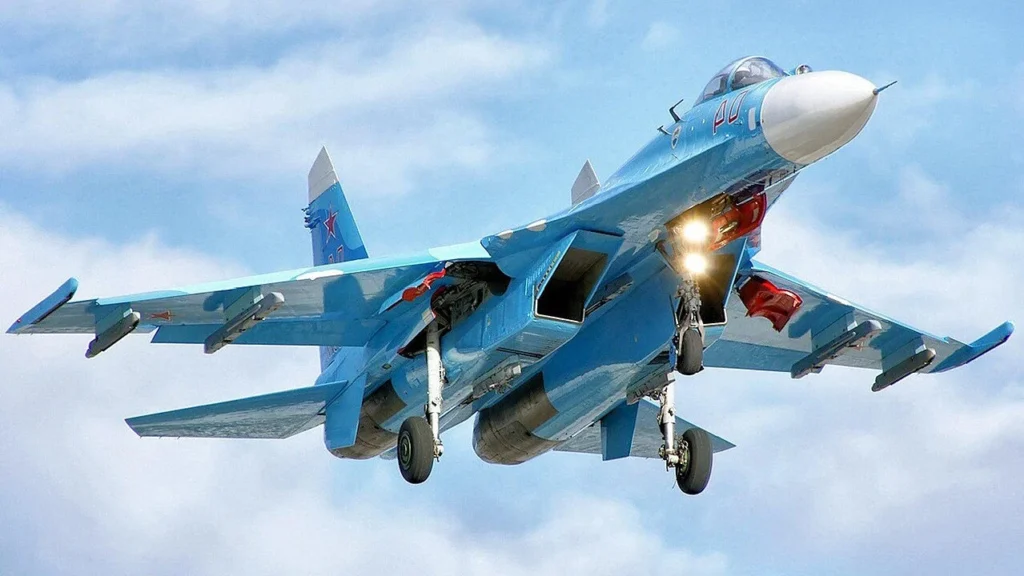 Фото: Moonhunterofindia - Собственная работа, CC BY-SA 4.0, https://commons.wikimedia.org/w/index.php?curid=115662280
Фото: Moonhunterofindia - Собственная работа, CC BY-SA 4.0, https://commons.wikimedia.org/w/index.php?curid=1156622809.) Сухой Су-27 Фланкер
Су-27 — большой двухмоторный истребитель, разработанный компанией «Сухой» для советских ВВС. Известный своей превосходной маневренностью и большой дальностью, он был основой для многочисленных вариантов.
Первый полет состоялся в 1977 году, он остается на вооружении. Работает на высотах до 62 500 футов (19 050 м). Работает на двух турбовентиляторных двигателях Saturn AL-31F. Известен своей ловкостью и передовой авионикой. Дальность полета Су-27 составляет 2190 миль (3530 км). Это повлияло на дизайн многих других истребителей.
К ключевым особенностям относятся:
- Роль: Истребитель воздушного превосходства
- Макс Спид: Маха 2.35 (приблизительно 1565 миль в час)
- Первый рейс: 20 мая 1977 года
- Примечательные особенности: Большие размеры, высокая маневренность, большая дальность.
- Оперативный потолок62 500 футов (19 050 м)
- диапазон: 2190 миль (3 530 км)
- ЭлектростанцияДва турбовентиляторных двигателя Saturn AL-31F
- Операционный период1985-настоящее
- значение: Краеугольный камень российской ПВО, известный своей маневренностью и мощным вооружением.
 Фото: Хосе Луис Селада Эуба
Фото: Хосе Луис Селада Эуба10.) МиГ-23 Флоггер
МиГ-23 был истребителем с изменяемой геометрией, разработанным Микояном для советских ВВС. Его отличительные крылья позволили эффективно летать как на дозвуковых, так и на сверхзвуковых скоростях.
Его первый полет был в 1967 году, и он остается в ограниченном обслуживании. Работает на высотах до 59 000 футов (18 000 м). Работает на турбореактивном двигателе Туманского Р-29-300. Известен своим качающимся дизайном, предлагающим универсальность. Он имеет дальность 1150 миль (1850 км). МиГ-23 активно используется в различных конфликтах.
Ключевые особенности:
- Роль: Истребитель/нападающий
- Макс Спид: Маха 2.4 (приблизительно 1600 миль в час)
- Первый рейс: 28 апреля 1967 года
- Примечательные особенности: Переменные геометрические крылья, универсальные возможности.
- Оперативный потолок: 59 000 футов (18 000 м)
- диапазон: 1150 миль (1850 км)
- ЭлектростанцияТуманский турбореактивный двигатель R-29-300
- Операционный период1970-настоящее (ограниченное использование)
- значение: Один из первых качающихся самолетов, предлагающий универсальность в различных боевых ролях.
 Фото: Mike LaChance из Кроули, штат Техас, США - Grumman F-14A Tomcat, CC BY 2.0, https://commons.wikimedia.org/w/index.php?curid=77968378
Фото: Mike LaChance из Кроули, штат Техас, США - Grumman F-14A Tomcat, CC BY 2.0, https://commons.wikimedia.org/w/index.php?curid=7796837811. Grumman F-14 Tomcat
F-14 Tomcat был сверхзвуковым, переменным крылом, двухмоторным, двухместным истребителем, разработанным для ВМС США. Известный своими дальнобойными боевыми возможностями класса «воздух-воздух», он был оплотом ВМС США на протяжении десятилетий. Первый полет состоялся в 1970 году, он действовал до 2006 года.
Работает на высотах до 50 000 футов (15 240 м). Использует два двигателя General Electric F110-GE-400. Известен своими крыльями с переменной стреловидностью и передовыми ракетными системами. Дальность полета F-14 составляла 1600 миль (2575 км). Он был показан в фильме «Top Gun».
Ключевые особенности включают:
- Роль: Защитный перехватчик флота
- Макс Спид: Маха 2,34 (приблизительно 1550 миль в час)
- Первый рейс: 21 декабря 1970 года
- Примечательные особенности: Крылья изменяемой геометрии, ракеты класса «воздух-воздух» большой дальности, мощные двигатели.
- Оперативный потолок: 50 000 футов (15 240 м)
- диапазон: 1600 миль (2 575 км)
- ЭлектростанцияДва турбовентиляторных двигателя General Electric F110-GE-400
- Операционный период1974-2006 годы
- значениеИзвестен своими крыльями с переменной стреловидностью и передовыми радарными и ракетными системами
 Фото: Алан Уилсон - Mikoyan MiG-29 Fulcrum 'RF-92183 / 07 blue, CC BY-SA 2.0, https://commons.wikimedia.org/w/index.php?curid=26899893
Фото: Алан Уилсон - Mikoyan MiG-29 Fulcrum 'RF-92183 / 07 blue, CC BY-SA 2.0, https://commons.wikimedia.org/w/index.php?curid=2689989312. МиГ-29 Fulcrum
МиГ-29 Микоян Fulcrum - легкий, маневренный истребитель, разработанный Советским Союзом для миссий превосходства в воздухе. Он впервые поднялся в воздух в 1977 году и поступил на вооружение советских ВВС в 1982 году.
МиГ-29 остается на вооружении некоторых ВВС по всему миру. Работает на высотах до 59 000 футов (18 000 м). Работает на двух двигателях Климова РД-33. Известен своей ловкостью и собачьими способностями. МиГ-29 имеет дальность 1150 миль (1850 км). Он экспортируется во многие страны мира.
Ключевые особенности включают:
- Роль: Истребитель воздушного превосходства
- Макс Спид: Маха 2.3 (приблизительно 1534 миль в час)
- Первый рейс: 23 августа 1977 года
- Примечательные особенности: Легкий, проворный, высокий темп подъема.
- Оперативный потолок: 59 000 футов (18 000 м)
- диапазон: 1150 миль (1850 км)
- Электростанция: Два турбовентиляторных двигателя Климова РД-33
- Операционный период1982-настоящее
- значениеИзвестен своей ловкостью и эффективностью в собачьих боях.
 Фото: Роланд Тернер из Бирмингема, Великобритания - IAI Kfir C-2, Intrepid Sea, Air and Space Museum, New York., CC BY-SA 2.0, https://commons.wikimedia.org/w/index.php?curid=76870029
Фото: Роланд Тернер из Бирмингема, Великобритания - IAI Kfir C-2, Intrepid Sea, Air and Space Museum, New York., CC BY-SA 2.0, https://commons.wikimedia.org/w/index.php?curid=7687002913. ИАИ Кфир
IAI Kfir - многоцелевой истребитель, разработанный Israel Aircraft Industries. Он является производным от Dassault Mirage 5, но со значительными улучшениями в авионике и оружии. Kfir впервые поднялся в воздух в 1974 году и поступил на вооружение ВВС Израиля в 1977 году.
Kfir был разработан Израилем для удовлетворения потребностей в современных истребителях, которые могли бы противостоять советским МиГ-21. Kfir - это универсальный самолет, который может использоваться для различных ролей, включая превосходство в воздухе, перехват и наземную атаку. Он был оплотом израильских ВВС в течение многих лет, а также экспортировался во многие другие страны.
- Роль: боец
- Макс Спид: Маха 2.2 (приблизительно 1470 миль в час)
- Первый рейс: сентябрь 1974
- Примечательные особенности: Производитель Mirage 5, улучшенная авионика и оружие
- Оперативный потолок: 58 000 футов (17 678 м)
- диапазон430 миль (700 км)
- ЭлектростанцияТурбореактивный двигатель General Electric J79
- Операционный период1975-настоящее
- значениеМодифицированный Mirage 5 с улучшенной авионикой и системами вооружения.
 Фото: Wallycacsabre - F22-28, CC BY 2.0, https://commons.wikimedia.org/w/index.php?curid=41935694
Фото: Wallycacsabre - F22-28, CC BY 2.0, https://commons.wikimedia.org/w/index.php?curid=4193569414. Lockheed Martin F-22 Raptor
Lockheed Martin F-22 Raptor - это одноместный, двухмоторный, всепогодный тактический истребитель-невидимка пятого поколения, разработанный для ВВС США (USAF). F-22 Raptor является первым в мире оперативным истребителем-невидимкой и остается единственным истребителем пятого поколения, который в настоящее время находится в производстве. Основной задачей F-22 является достижение и поддержание превосходства в воздухе. Известен своей скрытностью, скоростью и передовой авионикой. Дальность полета F-22 составляет 1839 миль (2960 км).
К ключевым особенностям относятся:
- Роль: Истребитель воздушного превосходства
- Макс Спид: Маха 2.25 (приблизительно 1500 миль в час) (классифицировано)
- Первый рейс: 7 августа 1997 года
- Примечательные особенности: Стелс-технологии, суперкруизные возможности, передовая авионика.
- Оперативный потолок65 000 футов (19 812 м)
- диапазон: 1839 миль (2960 км)
- ЭлектростанцияДва турбовентиляторных двигателя Pratt & Whitney F119-PW-100
- Операционный период2005-настоящее время
- значение: сочетает в себе скрытность, скорость, маневренность и передовую авионику.
 Фото: Алан Уилсон из Стилтона, Питерборо, Кэмбс, Великобритания - McDonnell Douglas F-4E (AUP) Phantom II «01508», CC BY-SA 2.0, https://commons.wikimedia.org/w/index.php?curid=74583190
Фото: Алан Уилсон из Стилтона, Питерборо, Кэмбс, Великобритания - McDonnell Douglas F-4E (AUP) Phantom II «01508», CC BY-SA 2.0, https://commons.wikimedia.org/w/index.php?curid=7458319015.) Макдоннелл Дуглас Ф-4 Фантом II
Макдоннелл Дуглас Ф-4 Фантом II - это многоцелевой двухмоторный, двухместный, всепогодный многоцелевой истребитель-бомбардировщик. F-4 Phantom II был одним из самых распространенных реактивных истребителей 20-го века.
В период с 1960 по конец 1990-х годов самолеты эксплуатировались ВВС США (USAF) и ВМС США (USN), а также экспортировались в 11 других стран. Работает на двух двигателях General Electric J79. Известен своей универсальностью в нескольких боевых ролях. Дальность полета F-4 составляет 1750 миль (2816 км).
К ключевым особенностям относятся:
- Роль: Многоцелевой истребитель
- Макс Спид: Маха 2.2 (приблизительно 1470 миль в час)
- Первый рейс: 27 мая 1960 года
- Примечательные особенности: Долгосрочный, универсальный, мощный радар
- Оперативный потолок60 000 футов (18 288 м)
- диапазон: 1750 миль (2 816 км)
- ЭлектростанцияДва двигателя General Electric J79-GE-17A
- Операционный период1960-1996 (Служба США)
- значениеСлужил в нескольких ролях и видел обширные действия во время войны во Вьетнаме.
 Фото: Стив Лайнс из Sandshurst, Великобритания - EGUL - McDonnell Douglas F-15E Strike Eagle — ВВС США — 91-0602 / LN, CC BY 2.0, https://commons.wikimedia.org/w/index.php?curid=89230012
Фото: Стив Лайнс из Sandshurst, Великобритания - EGUL - McDonnell Douglas F-15E Strike Eagle — ВВС США — 91-0602 / LN, CC BY 2.0, https://commons.wikimedia.org/w/index.php?curid=89230012Топ-10 самых быстрых истребителей в мире
Самые быстрые истребители в мире представляют собой комбинацию экспериментальных самолетов и самолетов, находящихся на вооружении. Ниже приведены Топ-10 самых быстрых истребителей в мире в 2024 году выглядит следующим образом:
| С.Н. | Самолет | Макс Спид (Mach) | Max Speed (мф) | Высота Макса (ft) |
| 1 1 | Микоян МиГ-31 Фоксхаунд | 2.83 | 1900 миль в час | 82 тысячи |
| 2 2 | Микоян МиГ-25 Foxbat | 2.83 | 1900 миль в час | 82 тысячи |
| 3 | Макдоннелл Дуглас F-15 Eagle | 2,5 | 1650 миль в час | 65 000 |
| 4.4 | Семейство Су-27 | 2.35 | 1600 миль в час | 59 000 |
| 5 | МиГ-23 Флоггер | 2.35 | 1553 миль в час | 59 000 |
| 6.6 | Grumman F-14 Tomcat | 2.34 | 1544 миль в час | 50 000 |
| 7. | ИАИ Кфир | 2.3 | 1520 миль в час | 36 000 |
| 8 | МиГ-29 Фулкрум | 2.3 | 1520 миль в час | 36 000 |
| 9 9 | Lockheed Martin F-22 Raptor | 2.25 | 1500 миль в час | 65 000 |
| 1010 | Макдоннелл Дуглас Ф-4 Фантом II | 2.23 | 1470 миль в час | 40 000 |
Экспериментальный самолет
- NASA X-43: Этот самолет держит рекорд самой быстрой скорости, когда-либо достигнутой крылатым самолетом, достигая 9,6 Маха (приблизительно 7366 миль в час) во время испытательного полета в 2005 году.
- NASA X-15: Этот экспериментальный самолет достиг максимальной скорости 4520 миль в час во время испытательного полета в 1967 году.
Истребители в настоящее время на вооружении
- МиГ-25 Foxbat: С максимальной скоростью 3,2 Маха (приблизительно 2190 миль в час), МиГ-25 является самым быстрым истребителем, все еще находящимся в эксплуатации.
- МиГ-31 Фоксхаунд: Этот российский самолет-перехватчик может развивать скорость 3,5 Маха (примерно 2440 миль в час).
- McDonnell Douglas F-15 Eagle: F-15 является самым быстрым истребителем в эксплуатации с точки зрения развернутых самолетов, с его последним вариантом, F-15EX, официально быстрее, чем любой вариант следующего самого быстрого самолета, Су-27. В некоторых сообщениях утверждается, что F-15EX достиг 2,4 Маха во время испытаний, хотя официально не подтверждено.
Самый быстрый истребитель в мире 2024 - Микоян МиГ-31 Фоксхаунд
The Микоян МиГ-31 Фоксхаунд Это известный российский сверхзвуковой самолет-перехватчик, известный своей скоростью и передовыми возможностями. The МиГ-31 Активно используется в различных военных операциях, в том числе в продолжающемся конфликте на Украине, где успешно задействована авиация противника. Он остается на вооружении ВВС России и Казахстана, а планы по модернизации и модернизации, как ожидается, продлят его эксплуатационный срок по крайней мере до тех пор, пока он не будет завершен. 2030.
Вот основные подробности о МиГ-31:
Общий обзор
- НАТО Назначение: фоксхаунд
- Первый полет16 сентября 1975 г.
- ВведениеПоступил на службу в 1982 году
- Роль: В первую очередь предназначен для перехвата высокоскоростных воздушных угроз.
Выступление
- Максимальная скорость: Маха 2,83 (1 900 миль в час) на большой высоте
- Скорость восхождения: 208 м/с (684 фута/с)
- Сервисный потолок: 20 600 м (67 600 футов)
- Боевой диапазон: 720 км (447 миль)
- Паромный хребет: 3300 км (2 050 миль)
Спецификация
- Экипаж: 2 (пилот и радарный оператор)
- Длина: 22,69 м (74 фута 5 дюйма)
- Wingspan: 13,46 м (44 фута 2 дюйма)
- высота: 6,15 м (20 футов 2 дюйма)
- Максимальный взлетный вес: 46 750 кг (103 000 фунтов)
- Двигатель: 2 х Соловьев Д30-Ф6 турбовентиляторные двигатели
- Тяга: 15 500 кг (152 кН) каждый с дожигателем
Топ-15 самых быстрых самолетов в мире - FAQ
Самым быстрым самолетом в мире в 2024 году является NASA X-43A, который достиг максимальной скорости 9,6 Маха (приблизительно 7366 миль в час) во время испытательного полета в 2004 году.
Самым быстрым истребителем, находящимся в настоящее время на вооружении индийских ВВС, является Су-30 МКИ, который может развивать скорость до 2 Маха (приблизительно 2120 км/ч или 1320 миль в час).
Самолет, который может двигаться со скоростью 4600 миль в час, — это Lockheed Martin SR-72, также известный как «Сын Черной Птицы». Этот гиперзвуковой самолет предназначен для достижения скорости 6 Маха, что эквивалентно 4600 миль в час.
Самым быстрым самолетом НАСА является X-43A, который достиг максимальной скорости 9,6 Маха (приблизительно 7366 миль в час) во время испытательного полета в ноябре 2004 года. Эта скорость была достигнута с помощью реактивного двигателя, который позволял самолёту летать на гиперзвуковых скоростях без переноса тяжёлых кислородных баллонов.
Североамериканский X-15 способен развивать скорость до 4520 миль в час (7274 км/ч), что эквивалентно 6,7 Маха. Эта скорость была достигнута Уильямом Рыцарем 3 октября 1967 года во время Рейса 188.
Какой ваш любимый самолет из списка? Дайте нам знать в разделе комментариев.
Присоединяйтесь к нам в Telegram Group для последних обновлений авиации. Следуйте за нами в Google News.
Топ-10 самых больших самолетов в мире (обновлено)
Список самых быстрых самолетов в мире 2024 года впервые появился на Aviation A2Z.




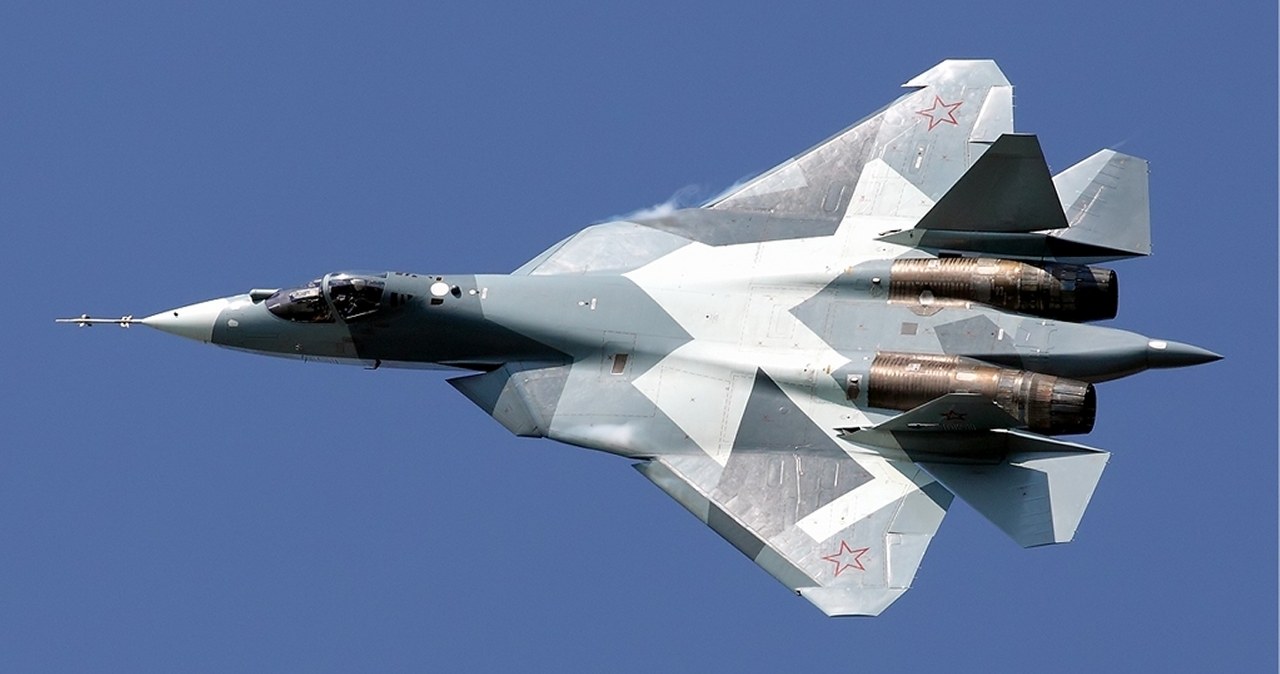

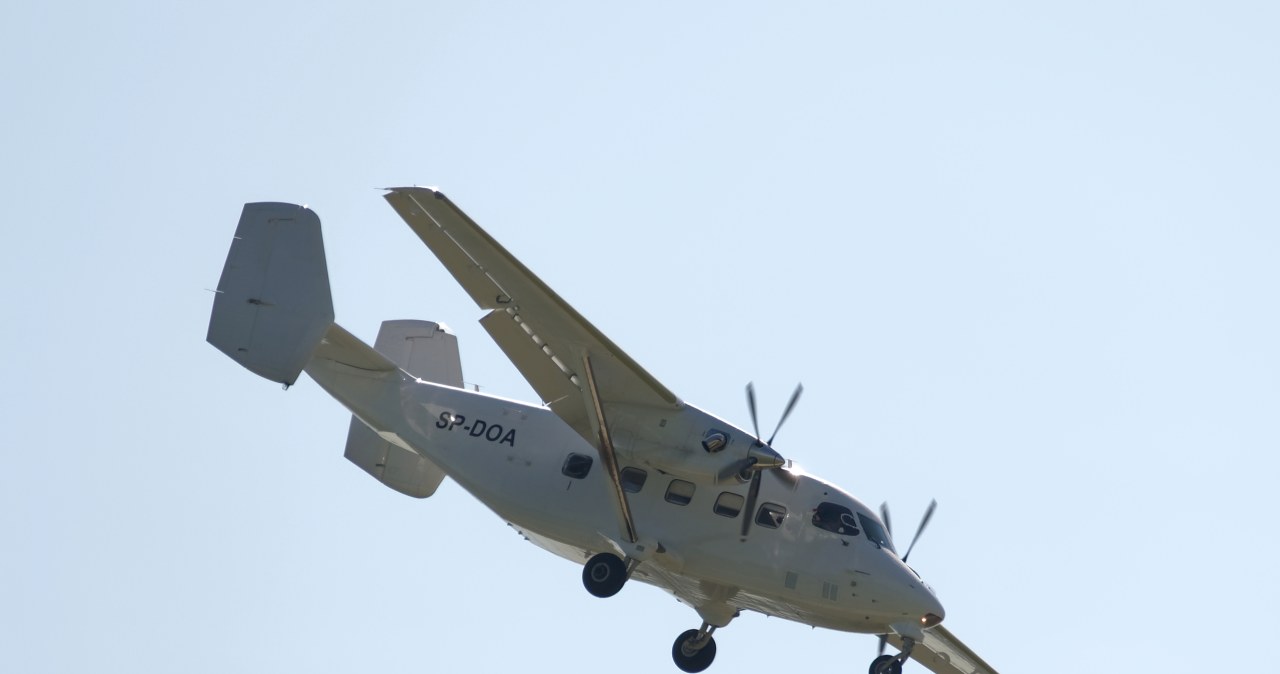


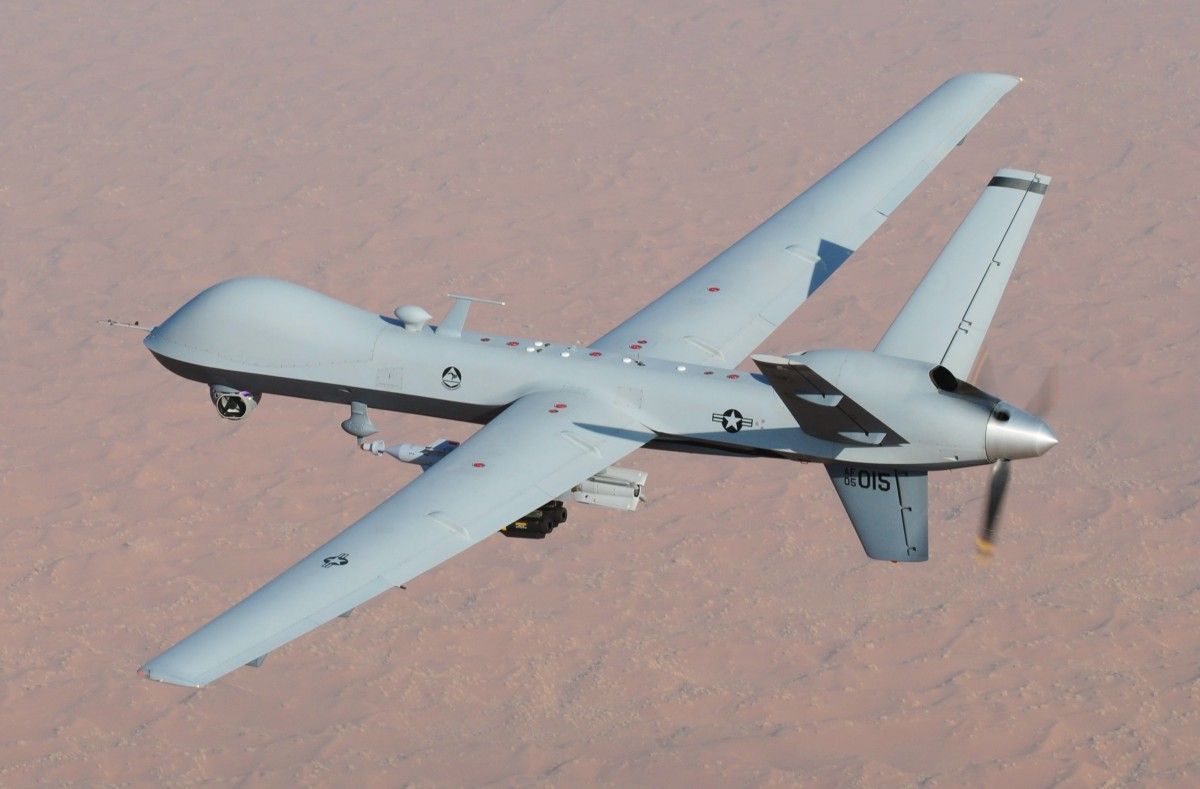



![Papież Leon XIV odwiedził Błękitny Meczet w Stambule [ZDJĘCIA]](https://cdn.wiadomosci.onet.pl/1/94sk9lBaHR0cHM6Ly9vY2RuLmV1L3B1bHNjbXMvTURBXy8zOGE2ZDA1YzcxMjAyN2EyZjE2Y2VmZWYzNGEzNmRiMC5qcGeSlQMAzNDNB9DNBGWTBc0JYM0GQN4AAqEwB6ExBA)
